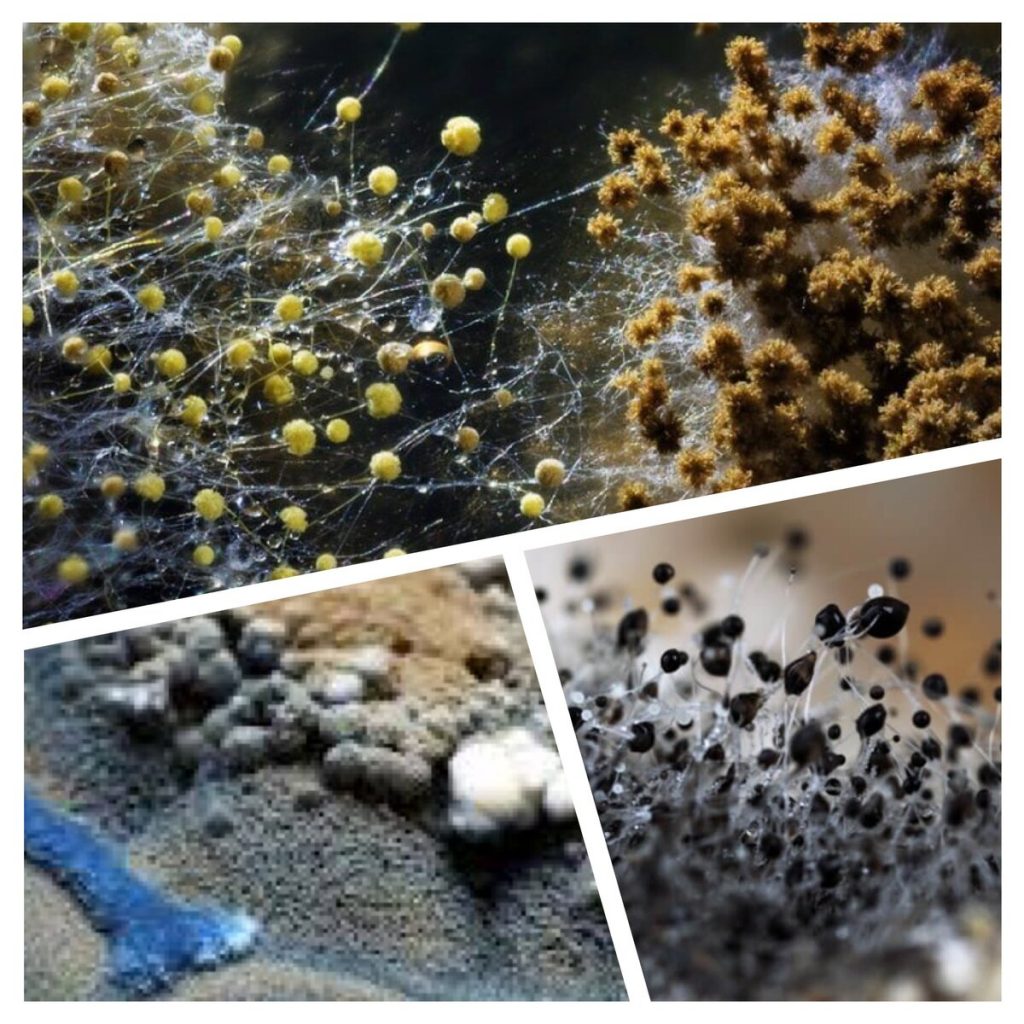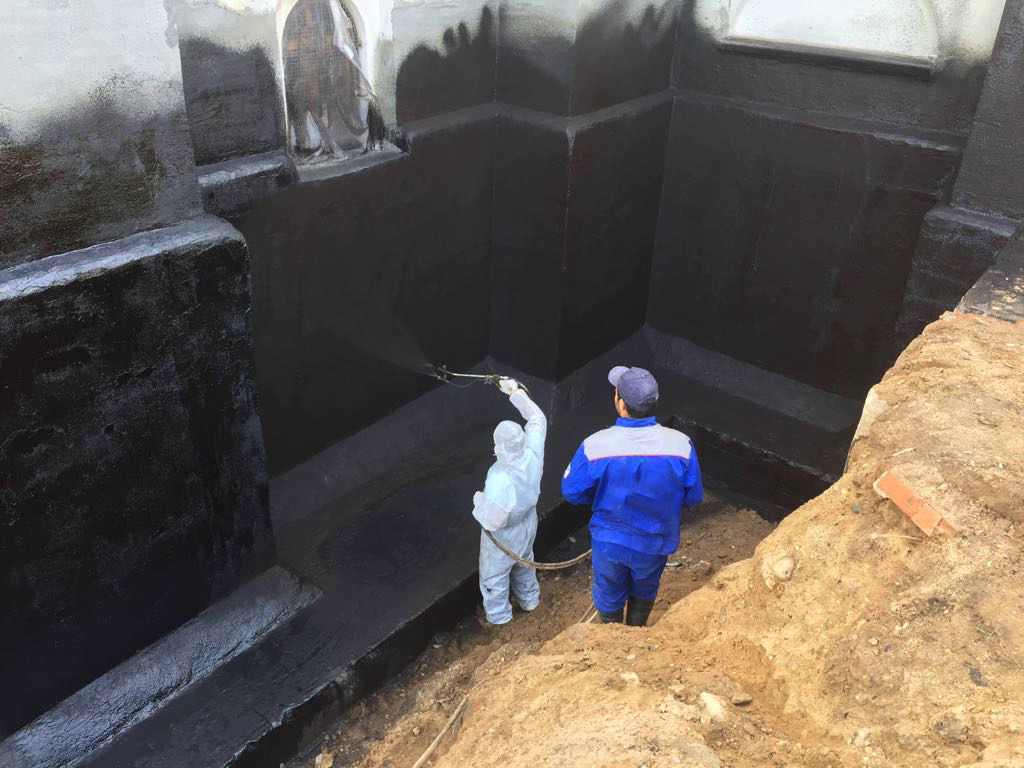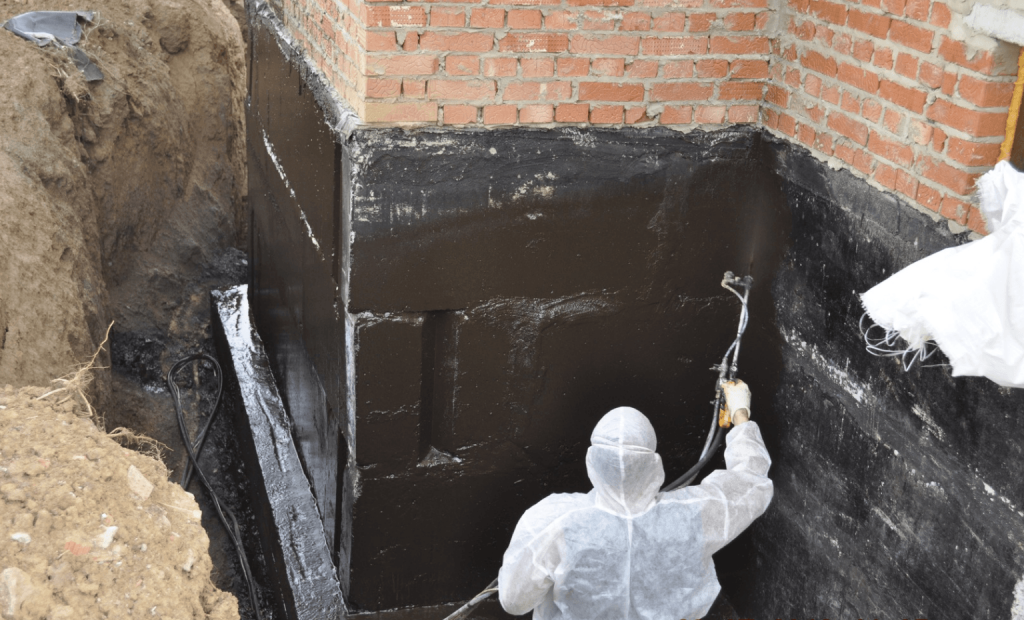Table of Contents
- What is mold?
- What is the danger of mold and why it is necessary to get rid of it urgently?
- Causes of mold in the basement and socle of a private house
- The best way to kill mold in a basment
- How to get rid of mold in the basement once and for all
Even if your basement looks clean and dry, mold can grow in hidden places in the basement, behind false walls and under decorative flooring, damaging your private home and your health.
Mold is a fungus that grows in damp rooms both inside and outside. It multiplies by dispersing mold spores, which subsequently spread not only in the basement, but throughout the house, through vents, windows and doors. They can also be attached to clothing and accessories.
Mold growing in basements and other parts of your home can cause diseases, allergies and infections of various types, which is why it is extremely important not to easily detect it, but also to make sure that it no longer appears.
What is mold?
Mold is a type of fungus that grows in multicellular structures called hyphae. These hyphae produce mold spores that are found indoors and outdoors. Although mold spores are found everywhere, they require moisture to grow. Therefore, fungus and mold can be especially common in rooms located underground or basement floors. There are thousands of different types of mold, and all of them are harmful to both buildings and humans.
A few basic facts about mold:
- Mold is a fungus.
- Mold grows on concrete, wood, fabric, plaster, drywall, floors, ceilings, soil, plants and food.
- Mold produces microscopic spores that germinate where moisture has accumulated.
- Mold growth threatens the structural integrity of the building.
- Exposure to mold can lead to serious health problems.
Individual colonies of fungi and spores are very small and cannot be seen without a microscope, but as soon as a colony of mold appears, it can form visible spots on different surfaces and places. Mold usually comes in these colors: black, blue or green. Its color is determined by various factors, such as type, nutrient source, age of the colony, etc. Of all the types of mold, black (officially called Stachybotris) is considered the most harmful to the health of living beings.
The type of mold will determine the method of recultivation.

Different types of mold
Unfortunately, not all types are the same, but we can roughly divide them into 3 main ones:
- Allergenic – this type of mold is the least harmful of all types of mold; however, it can cause problems for people with mold allergies or asthma. Allergenic mold is usually not life-threatening.
- Pathogenic – this species is often harmful not only to people with asthma or mold allergies, but also to healthy people. For example, this type of mold can cause hypersensitive pneumonitis, resembling bacterial pneumonia.
- Toxigenic mold – this type of mold can really cause serious health problems, both temporary (eye irritation or cough) and permanent (for example, immunosuppression, neurological disorders or cancer). Toxigenic mold produces mycotoxins– a toxic chemical present inside or on the surface of mold spores that can be inhaled, swallowed or touched.

What is the danger of mold and why it is necessary to get rid of it urgently?
So, why is mold bad and harmful?
Mold growth in the basement of a private house or administrative building, on the ceiling, attic or in the cellar is dangerous for two reasons:
- Firstly, when the mold begins to grow, it feeds on the materials on which it grows, which leads to irreversible damage.
- Secondly, mold releases tiny spores and by-products into the air, which can irritate or cause many diseases. If inhaled, they can cause breathing problems.
What effect does mold have on your health?
Everyone’s immune system and medical history are different, respectively, it is impossible to say with certainty whether exposure to low concentrations of mold is safe or not, since each person will react differently. The fact is that people with a suppressed immune system most often experience health problems when they spend time indoors with the presence of mold.
For example, exposure to mold growing indoors may be associated with nasal congestion and sinuses, cough, sore throat, asthma (or its exacerbation), nosebleeds, headache, skin and eye irritation, etc.
It is very important to keep in mind that some types of mold are capable of producing extremely powerful toxins called mycotoxins, which can lead to serious health consequences such as cancer.
Causes of mold in the basement and socle of a private house
Moisture is a key factor leading to the emergence and spread of mold in basements and houses, but this is not the only possible cause.
The main causes of mold growth in the basement, basement and cellar:
- Excess moisture: The lack of high-quality waterproofing of the slab and basement walls from the outside leads to the fact that the material from which they are made, whether concrete, brick, FBS blocks or other types of blocks, saturates the water like a sponge, becomes moist and gives this moisture inside the basement. This constant moisture of the walls or foundation just leads to the emergence of various fungi and spores.
In the absence or with broken waterproofing, water and moisture penetrates into concrete or brick, freezes in winter, and thaws in spring, thereby destroying these substances, forming microcracks in them and expanding existing capillaries, pores and voids, which eventually leads to increased water pressure and the formation of more moisture.
In addition to moisture over time, the growth of microcracks and capillaries leads to active leaks in the basement, which ultimately also affects the formation of mold. - Condensation: Excess condensation causes mold to form around windows, doors, cold pipes, concrete floors and walls. When these surfaces are cold and the house or building is warm, condensation forms. Areas with or near condensation are the main areas for mold growth. The lack of thermal insulation on the outside of the basement walls can lead to condensation, since heating works in the house in winter, and it is cold outside.
- Poor ventilation: If there is poor ventilation in the basement of a private house or commercial building and there is excessive moisture, then this can lead to the fact that moist stagnant air will produce mold in the basement. Moisture enters the air from steam generated during cooking, cleaning and bathing. Fans and ventilation in your home dissipate moisture to prevent mold. However, when ventilation is not working, mold can grow.
How does mold grow in the basement?
Like any other living thing, mold needs water to grow. In fact, without water, it can’t grow at all. Other factors that are crucial for mold growth are the food source, oxygen and air temperature from 40 to 100 degrees on Fahrenheit.





The best way to kill mold in a basment
There are several proven methods for surface treatment and getting rid of mold and mildew.
Important: All the processing methods described below will rid the basement of fungus and spores for a while, but they will not be able to prevent their reappearance, since they do not solve the root of the problem and do not work to eliminate the cause of their occurrence.
Chemical agents
Special chemical compositions designed to remove fungi and colonies from mold are the most effective methods of control. As a rule, these compounds can be bought in any specialized store, including in large chain stores where building materials and construction chemicals are sold.
Important: Before using chemicals to combat mold, be sure to wear gloves, a respirator and, if possible, an eye mask. Do not remove the mold before applying the preparations (in advance)! This can disperse the spores and spread the mold to other places where it will be more difficult to get rid of it.
The best means to remove fungus and various kinds of molds:
- Savo or Savo – The Savo product is used for the treatment of mold areas from external and internal wooden, gypsum, concrete or painted surfaces. Removes mold from corners in the bathroom, around the bathtub and window frames. The drug SAVO is suitable for wet rooms where there are prerequisites for the appearance of fungus. For example, in bathrooms, basements, spas, swimming pools, saunas, public baths and food warehouses. How to use: Spray the affected areas directly with undiluted SAVO preparation from a distance of 5-10 sm. After 20 minutes, rinse the sprayed area or let it dry.
- Prosept Fungi clean is a highly effective compound of active chlorine ions as oxidants and catalytic substances to accelerate the action of the product and get rid of spores and plaque. Prosept Fungi clean is supplied in liquid form and is suitable for application on concrete, wood, stone, brick, plastic and drywall. When applied, Prosept has a disinfecting effect and helps to combat unpleasant odors.
- Pufas – Can be purchased as a liquid solution or as a spray. Pufas is a reliable preparation for combating mold spores based on algae and bacteria. When applied, it acts immediately and has a bleaching effect and disinfection.
- Neomid- Neomid material consists of a synergistic combination of biocides and technological additives. Neomid is used for processing mineral surfaces (stone, asbestos slate, tiles, concrete, brick, tile joints, etc.) in residential buildings and premises, kitchens, bathrooms, toilets, baths, garages, basements, facades and foundations. When treated with this preparation, work should be carried out in well-ventilated rooms or outdoors at ambient temperature and the temperature of the treated surface + 5 ° with and above.
- Cillit bang is an effective tool that destroys mold without the need to scrub or clean it. CILLIT BANG POWER CLEANER BLACK MOULD REMOVER leads to visible processing results in a matter of seconds. It is ideal for various surfaces, including concrete, drywall and plaster.
- Dos-spray and Bimold from Grass – Dos-spray Spray in a dispenser bottle with active chlorine effectively eliminates mold from baths, sinks, toilets, pool walls, tiles, floors and other surfaces. Dos-spray and Bimold are suitable for use even in hard-to-reach places, corners, joints and joints, thanks to a simple spray formula. During processing, it is necessary to apply the product to the cleaned surface, after which it is treated with a brush or sponge. The remnants of the product are wiped with a microfiber cloth. For particularly persistent stains, the treatment must be repeated by increasing the exposure time.
- Dufa Schimmel – Designed to effectively combat fungus and other spores. Suitable for use on such bases as concrete, brick, wood, drywall. Dufa Schimmel contains chlorine and has antibacterial properties. For ease of use, Dufa is supplied as a spray.

Folk methods of struggle
- Vinegar – to get rid of the affected areas, it is applied to the problem areas using a rag or spray, repeating the procedure until the problem is completely eliminated. With proper ventilation, the acrid smell of vinegar quickly disappears.
- Soda – it must be diluted with water while maintaining certain proportions (1 spoon per 0.5 liters of water). Further, the problem surface is treated with the resulting solution, until the plaque and caustic substances are completely removed.
- Bleach – when it is diluted 1 to 10 with water, a solution is obtained with which you can fight fungal plaque and as a result, get rid of it for a while.

How to get rid of mold in the basement once and for all
If you just use chemicals to eliminate mold in your house or basement, then sooner or later this mold will come back again, since you have not solved the root of the problem, namely, you have not eliminated the cause of its initial occurrence. The main cause of mold almost always lies in excessive humidity in the basement, the root of which is water leaks into the basement or the wet base of walls or foundation slabs.
In order to get rid of mold once and forever, you need to eliminate existing leaks and reduce the humidity of the walls, foundation, and basement floor to a minimum, and this is possible only when you protect all the structures of the underground room from possible exposure to water. Such protection is called waterproofing.
Waterproofing can be done both from the inside and outside of the basement or socle
Waterproofing outside:
To restore the external protection of the underground structure from water penetration, it is necessary to perform the following step-by-step actions:
- Dig out the building to the bottom of the foundation plate or tape;
- Dismantle the insulation and the old waterproofing coating (if any);
- Clean the walls from dirt;
- Apply high-quality waterproofing to the slab with a wall approach, 20 cm above the ground level;
- Mount the insulation using foam glue or other water-based adhesives;
- Perform backfilling without damaging the insulation.


You can read more about the waterproofing of the basement from the outside in the article – “How to make properly the waterproofing of the basement from the outside”.
Additionally recommended:
- Install a drainage membrane on the insulation – this measure will protect the work done from damage during filling, and will also contribute to additional water drainage from the house;
- Install a drainage system 30-50 sm below the level of the foundation – This measure will help to divert both the water that approaches the building from the outside and the water that is under the building, thereby reducing the water pressure on different structures of the building.

You can read more about the drainage system in the article – “Turnkey drainage installation around the house: Proper drainage, its types, installation technologies, materials, schemes, and prices“.
Important: When performing waterproofing works outside, you solve the root of the problem, namely the ingress of moisture into the walls, tape or foundation, and its effects on these elements.
Waterproofing from the inside:
If it is impossible to do the work from the outside, you can always do it from the inside, but do not forget that in this situation you will not be able to solve the root of the problem, and sooner or later it may return. When installing waterproofing from the inside, the following steps should be performed:
- Repair existing cracks by stitching them, strengthening them with a special sealant, and injecting;
- To fill in the cut-off waterproofing of the cold joints of the wall plate, by means of their stitching with a layer-by-layer seal of the expanding sealant and injection. Seams are the weakest points of any structure, and it is there that water begins to pass in the first place, and thanks to injection, it will not be able to pass not inside the room and not capillary up the walls;
- Apply a waterproofing compound withstanding the negative effect of moisture from the outside inside.

You can read more about waterproofing the basement from the inside in the article – “Waterproofing the basement from the inside: Methods, materials, and stages of work”.
Additional activities:
- Humidity control;
- Proper insulation;
- Adequate ventilation of your home.









